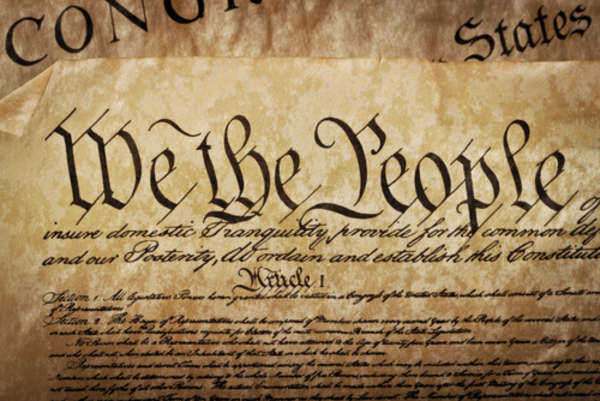Table of Contents

Election of the President and Vice President in the United States
The United States presidential election is one of the most significant global political events, drawing attention from all quarters. The election process to elect the President and Vice President begins years before the election day, and campaigning dominates the media in the lead-up to the election. Understanding the workings of the presidential election is essential to comprehend democracy in the United States. In this article, we’ll explore the voting process, the candidates, and the electoral college that determine who becomes the next President and Vice President.
The Electoral Process
The United States presidential election is a two-step process involving a primary and a general election. The primary elections’ purpose is to select delegates who will represent each state at each party’s national convention. These delegates will cast their vote on behalf of their party in the first round of the presidential election at the national convention.
After the conventions, the presidential candidates will campaign for the general election. The general election is in November of the election year, and it involves vote casting by citizens who meet the qualifications in each state.
The Candidates
Each political party gets to select its presidential candidate through a series of primaries and caucuses held in each state. Once the candidate is selected, they select a running mate or Vice President. The Vice Presidential candidate is usually chosen to balance out the presidential candidate’s strengths and weaknesses in terms of background, experience, party affiliation, and geographical location.
The Electoral College
The President and Vice President are not elected by the popular vote as the electoral college comprised of elected officials from each state votes for the winner. Each state’s number of electoral college votes is based on its population, with a minimum of three per state. Washington D.C also has three votes in the electoral college process.
During the general election, voters in each state cast their vote for their preferred candidates for the President and Vice President. The winner of the popular vote in any given state is awarded all of the state’s electoral college votes. The candidate with the most electoral college votes, i.e., 270 out of 538, wins the presidency.
Challenges in the Electoral Process
The electoral process has several advantages but also includes significant challenges. One of the significant issues is each state’s winner-takes-all system, where the candidate with the majority in one state receives all the state’s electoral votes, which means that a candidate could win the electoral college without winning the popular vote.
Another issue is that the electoral college’s method gives some states significant influence in the outcome of the election while rendering others insignificant, known as “swing states.” This can skew the entire presidential campaign, with these states receiving most of the candidates’ attention while many states are often overlooked.
Conclusion
The United States presidential election process is a complex and intricate affair. The multi-phase process strives to balance popular vote and state representation in the selection of the President and the Vice President. While the electoral process still has its challenges, it remains a pillar of American democracy, representing a unique concept in the power, limitations, and operations of the elected executive branch of government.
The election of the President and the Vice President is established in Article 2 of the Constitution. The procedure is further honed by a number of Federal and State laws concerning the operation of the election, especially in terms of the means of casting ballots and how those ballots are counted. The system has fundamentally changed only somewhat since its original creation with Article 2 of the Constitution, though of course, the specific nature of each election has changed greatly as technology advanced. To elect the President and the Vice President, the system employs the Electoral College. The electors in the Electoral College cast votes directly for the President and the Vice President. Whichever candidate receives an absolute majority of votes, meaning over half of all the possible votes of the electors, wins the election. The electors are, themselves, elected by each State.
The exact method for electing electors is determined by each State Legislature and not by the Federal Government. This means that the popular election for President and Vice President on Election Day is not actually an election directly for the President or the Vice President. The number of electors that each state may appoint is determined by adding the number of Senators that the State has to the number of Representatives of the State. No one holding a public office, such as a Senator or a Representative, can be an elector.
The Electoral College system has changed somewhat as a result of the Twelfth Amendment, which adjusts the methods by which a President and Vice President are elected. In the original form of the Constitution, the Vice President would be the Presidential candidate who received the second most number of votes. Furthermore, this meant that electors were only voting for President, and never for President and Vice President separately. This led to a somewhat dysfunctional system, as Vice Presidents and Presidents might be at odds with each other and there was the potential for a supposed Vice Presidential candidate to be elected President. Thus, the Twelfth Amendment altered the system such that each elector casts one vote for President and one vote for Vice President.
If the Electoral College votes in such a way that no candidate receives an absolute majority of the votes, then the vote would go to the House of Representatives, which would hold its own vote for the President. This was part of the reason for the original implementation of the Twelfth Amendment, as the House vote resulted in an entirely different candidate winning than either the popular vote or electoral vote would have indicated in the election of 1800.
To run for President, a candidate must have been a natural born citizen of the United States and must still be a citizen at the time he or she is running.Furthermore, the candidate must be thirty five years old at least, and must have been a resident in the United States for fourteen years. The same criteria apply to the Vice-President.

























